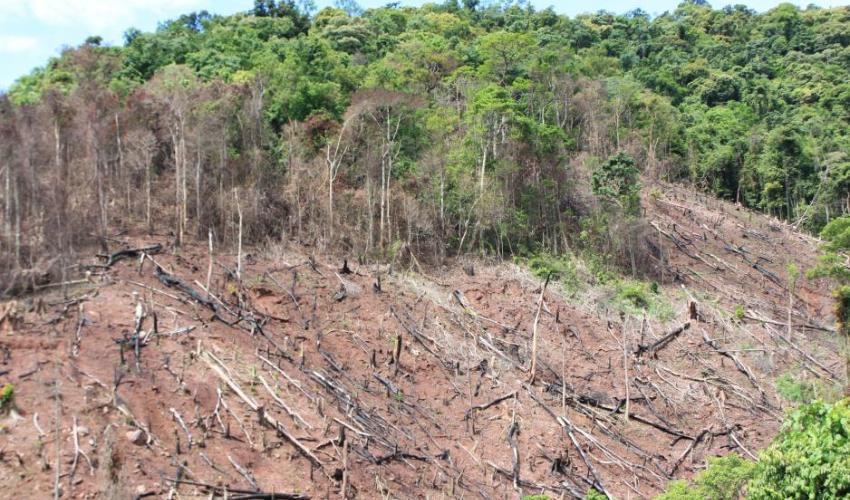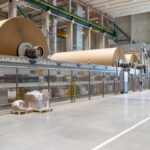You’ve no doubt seen the impassioned ENGO fundraising claims warning that “billions of trees are cut down each year to make paper products,” and as a result, “deforestation is accelerating at a rapid pace.” Their suggested solution to this “deforestation crisis and its climate impacts” is to eliminate the use of wood fiber to manufacture paper products – 50% by 2030 – and replace it with recycled content or so called “next generation” alternative fibers.
But as President John Adams once said, “Facts are stubborn things; and whatever may be our wishes, our inclinations or the dictates of our passion, they cannot alter the state of facts and evidence.” And the fact is that sustainably produced North American paper products are not a cause of deforestation, no matter what some ENGOs say or how many times they say it.
Deforestation is defined by the UN Food and Agriculture Organization (FAO) and other credible environmental organizations as the permanent conversion of forestland to non-forest uses. Every five years, the UN FAO publishes its Global Forest Resources Assessment, a comprehensive report on the state of the world’s forests. Its most recent report states, “The rate of net forest loss decreased substantially over the period 1990–2020 due to a reduction in deforestation in some countries, plus increases in forest area in others through afforestation and the natural expansion of forests.” The UN FAO also reports that those areas of the world that consume the greatest amount of wood have the least amount of deforestation – areas like the United States and Canada.
Yes, deforestation remains a problem, particularly in the developing world due primarily to the conversion of forestland to agricultural crops for animal feed. But net forestland in the U.S. actually increased 18 million acres between 1990 and 2020, even in the face of deforestation driven by rapidly expanding urban development and climate change, and net forestland in Canada remained stable during the same period (UN FAO).
Thanks in great part to the sustainable forestry practices advocated by the paper and forest products industry, the annual increase in U.S. tree volume is roughly twice the amount that is harvested (US Forest Service, USFS). By law, every hectare of forestland that is commercially harvested on Canada’s public lands (94% of all Canadian forestland) must be reforested (Natural Resources Canada, NRCan). Only 0.2% of Canadian forestland (NRCan) and less than 2% of U.S. forestland (USFS) is harvested annually, and the vast majority of that harvest is used for non-paper purposes.
Recycling as much paper as possible is indeed a desirable environmental goal, and recycling is critical to a more sustainable, circular economy. In the U.S., 68% of paper and paper-based packaging gets recycled, and the recovery rate for corrugated cardboard stands at an amazing 91%. But paper can be recycled only five to seven times before its wood fibers become too weak to bond into new products, making the use of only recycled content a practical impossibility. If fresh wood fiber isn’t continuously added to the manufacturing stream, the supply of recycled fiber would quickly run out and paper production would cease.
Expanding the use non-wood fibers to meet the growing global demand for paper products, especially packaging, can be an environmentally sound option, and for some uses they make sense. But suggesting that wood fiber simply be replaced with non-wood alternatives as a one-size-fits-all solution to deforestation and climate change ignores both the science and economics of papermaking.
In North America, it is the consistent demand for responsibly sourced paper products that provides the economic incentive to keep land forested and sustainably managed, land that might otherwise be converted to non-forest uses. However, in countries where wood resources are scarce, such as China and India, non-wood fibers including purpose grown fibers and agricultural residues, have been effectively used in papermaking. Wood, agricultural crops and crop residues are all important sources of papermaking fiber. Which sources make the most environmental and economic sense are inherently driven by:
- Relative abundance of the raw materials,
- Proximity to manufacturing infrastructure and the delivered cost of raw materials,
- Compatibility with existing manufacturing infrastructure,
- Manufacturing efficiencies,
- Full life cycle environmental impacts, including recyclability,
- Contribution to desired product characteristics, and
- Demand for and success of products in the marketplace.
Those who genuinely want to solve the problem of deforestation and its climate change impacts need to stop following the “dictates of their passion” and focus on real world, fact-based solutions that will make a meaningful difference for our planet.
By Kathi Rowzie, President, Two Sides North America.





